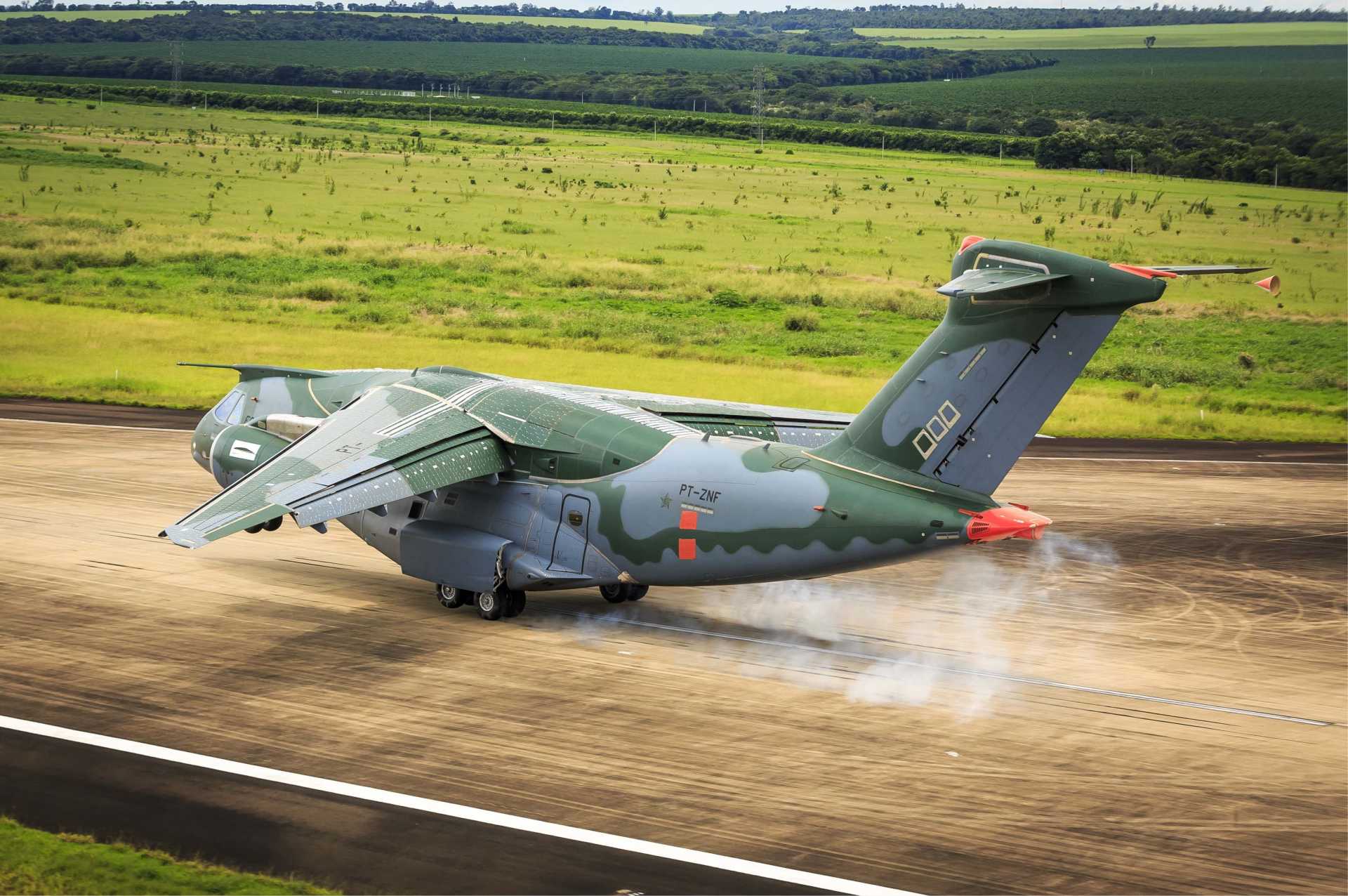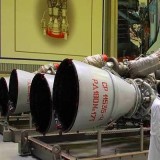Greece could purchase Brazilian C-390 transport aircraft to replace its US-made C-130 Hercules

{loadposition bannertop}
{loadposition sidebarpub}
As reported by OnAlert on April 22, 2025, the Brazilian Embraer C-390 Millennium has been formally included in Greece’s Long-Term Defence Procurement Program as a candidate to replace the aging US-made C-130 Hercules aircraft of the Hellenic Air Force (HAF). The Air Force General Staff has recommended the initial acquisition of at least three C-390s, with an option for additional aircraft in subsequent phases. This potential procurement is structured within a 12-year defense planning framework. However, its implementation is scheduled for the end of the decade, as current priorities include the ongoing upgrade of 38 F-16 Block 50 fighters to the Viper configuration.Follow Army Recognition on Google News at this link
The Hellenic Air Force (HAF) has recommended the initial acquisition of at least three C-390s, with an option for additional aircraft in subsequent phases. (Picture source: Brazilian Air Force)
Until the introduction of new transport aircraft, Greece intends to maintain operational capability using a limited number of existing C-130s and the C-27J Spartan fleet. The C-27Js are set to undergo upgrades, and a new five-year Follow-On Support contract is planned for 2026. Despite ongoing efforts by the HAF, the Hellenic Aerospace Industry (EAB), and the 356th Tactical Transport Squadron “Hercules,” availability rates for the C-130 remain low. As of early 2025, four aircraft are operational, with a possible fifth expected to return to service in the coming months. Greece had previously submitted a request to the United States for decommissioned C-130s, but these were deemed unsuitable due to restoration costs. A new request has since been filed for operational surplus aircraft, some of which are expected to become available in 2025.
Interest in the C-390 Millennium has increased since 2023. Embraer presented the aircraft to the HAF on January 25, June 26, and November 22 of that year, including static displays and flight evaluations at Elefsis Air Base. Greek personnel conducted familiarization flights and participated in demonstrations of cargo loading procedures. On February 20, 2025, senior Greek political and military officials attended another static presentation at Elefsis, followed by briefings on the aircraft’s technical features and potential acquisition cost. These evaluations are part of a broader assessment process that includes the C-130J and second-hand Hercules options.
The C-390 Millennium is a twin-engine jet-powered tactical transport aircraft with a cargo hold measuring 18.5 meters in length, 3.45 meters in width, and 2.95 meters in height. Its maximum payload capacity is 26,000 kilograms, and it can transport up to 80 fully equipped troops, 74 stretchers, or vehicles such as two M113 armored personnel carriers or one Sikorsky H-60 helicopter. It is powered by two IAE V2500-E5 turbofan engines, each producing 31,330 pounds of thrust. These engines are also used in the Airbus A320 commercial fleet, with over 7,200 units produced globally. This commonality is expected to lower maintenance costs and simplify logistics.
In performance terms, the C-390 has a maximum speed of 988 km/h and a cruise speed of Mach 0.8. It can fly 5,500 kilometers with a 15-ton payload and operates at a service ceiling of 36,000 feet. In comparison, the C-130J has a top speed of 670 km/h, a 3,300-kilometer range with similar payload, and a ceiling of 29,000 feet. The C-390’s cargo bay is designed without internal landing gear sponsons, unlike the C-130, which reduces usable internal width in certain configurations. The external design of the landing gear compartments in the C-390 allows for a wider and higher cargo hold, enabling the transport of larger-volume equipment.
The C-390 Millennium supports a range of missions, including cargo transport, troop transport, aeromedical evacuation, aerial refueling, and firefighting. (Picture source: Brazilian Air Force)
The aircraft supports a range of missions including cargo transport, troop transport, aeromedical evacuation, aerial refueling, and firefighting. It is equipped with Rockwell Collins Pro Line Fusion avionics, fly-by-wire flight controls, directional infrared countermeasures, and continuously computed drop point systems. It can be configured quickly for different missions using modular kits. The aircraft received its initial certification under civil aviation regulations (14 CFR Part 25), followed by military certification, and has operated from semi-prepared or damaged runways.
Greece is one of several NATO and European countries considering or selecting the C-390. Confirmed customers include Brazil, Portugal, Hungary, the Netherlands, Austria, the Czech Republic, Slovakia, Sweden, and South Korea. Morocco has received one aircraft for evaluation. Slovakia selected the type in December 2024, and deliveries are scheduled for 2025 and beyond. Sweden confirmed the purchase of four aircraft in April 2025 following a selection process that began in November 2024. Other countries currently in negotiation or expressing interest include Poland, Finland, Türkiye, Saudi Arabia, South Africa, Angola, India, Egypt, Colombia, Chile, the United Arab Emirates, and Rwanda.
In recent months, Sweden, Austria, and the Netherlands agreed to conduct a joint procurement for NATO special missions involving nine modified C-390 aircraft. Portugal, which joined the program in 2010 and received its first unit in October 2022, is participating in the development of a new ISR (Intelligence, Surveillance, Reconnaissance) variant designated C-390 IVR. This version will integrate synthetic aperture radar, electro-optical and infrared sensors, advanced communication systems, and external payload hardpoints, with a modular roll-on/roll-off configuration to maintain flexibility across missions. These developments were announced at the LAAD 2025 defense exhibition, where cooperation agreements between Embraer and the Portuguese Air Force were formalized.
The operational C-390 fleet of the Brazilian Air Force has reported readiness levels above 93% and mission success rates above 99%. (Picture source: Brazilian Air Force)
The aircraft has been used in multiple roles by the Brazilian Air Force, including humanitarian operations in Lebanon, Haiti, and Ukraine; disaster relief missions during the COVID-19 pandemic; supply flights to Antarctica; and international exercises such as Salitre IV and Culminating in the United States. The operational fleet has reported readiness levels above 93% and mission success rates above 99%. The cost per unit is estimated at approximately €80 million, with operational costs considered lower than those of the C-130J due to engine commonality and commercial-standard maintenance procedures.
The current number of aircraft ordered by various countries has reached 35, with projections of up to 120 more under negotiation. Greece has been listed among these potential buyers, with six aircraft under consideration. The Ministry of National Defence has not announced a final decision, but the C-390 Millennium remains one of the two leading candidates under evaluation, alongside second-hand or new C-130Js. No official procurement has been signed, and timelines remain dependent on budget allocations.
Greece’s transport aviation needs include not only tactical lift but also support for medical evacuation and firefighting operations. These mission profiles are among the roles supported by the C-390. The aircraft was introduced to Greek authorities as early as November 2023, when it was evaluated as part of a replacement plan for the C-130 fleet. Embraer’s engagement with Greece is part of a broader marketing campaign in Europe, supported by cooperation agreements with European industry partners and national governments.

{loadposition bannertop}
{loadposition sidebarpub}
As reported by OnAlert on April 22, 2025, the Brazilian Embraer C-390 Millennium has been formally included in Greece’s Long-Term Defence Procurement Program as a candidate to replace the aging US-made C-130 Hercules aircraft of the Hellenic Air Force (HAF). The Air Force General Staff has recommended the initial acquisition of at least three C-390s, with an option for additional aircraft in subsequent phases. This potential procurement is structured within a 12-year defense planning framework. However, its implementation is scheduled for the end of the decade, as current priorities include the ongoing upgrade of 38 F-16 Block 50 fighters to the Viper configuration.
Follow Army Recognition on Google News at this link
The Hellenic Air Force (HAF) has recommended the initial acquisition of at least three C-390s, with an option for additional aircraft in subsequent phases. (Picture source: Brazilian Air Force)
Until the introduction of new transport aircraft, Greece intends to maintain operational capability using a limited number of existing C-130s and the C-27J Spartan fleet. The C-27Js are set to undergo upgrades, and a new five-year Follow-On Support contract is planned for 2026. Despite ongoing efforts by the HAF, the Hellenic Aerospace Industry (EAB), and the 356th Tactical Transport Squadron “Hercules,” availability rates for the C-130 remain low. As of early 2025, four aircraft are operational, with a possible fifth expected to return to service in the coming months. Greece had previously submitted a request to the United States for decommissioned C-130s, but these were deemed unsuitable due to restoration costs. A new request has since been filed for operational surplus aircraft, some of which are expected to become available in 2025.
Interest in the C-390 Millennium has increased since 2023. Embraer presented the aircraft to the HAF on January 25, June 26, and November 22 of that year, including static displays and flight evaluations at Elefsis Air Base. Greek personnel conducted familiarization flights and participated in demonstrations of cargo loading procedures. On February 20, 2025, senior Greek political and military officials attended another static presentation at Elefsis, followed by briefings on the aircraft’s technical features and potential acquisition cost. These evaluations are part of a broader assessment process that includes the C-130J and second-hand Hercules options.
The C-390 Millennium is a twin-engine jet-powered tactical transport aircraft with a cargo hold measuring 18.5 meters in length, 3.45 meters in width, and 2.95 meters in height. Its maximum payload capacity is 26,000 kilograms, and it can transport up to 80 fully equipped troops, 74 stretchers, or vehicles such as two M113 armored personnel carriers or one Sikorsky H-60 helicopter. It is powered by two IAE V2500-E5 turbofan engines, each producing 31,330 pounds of thrust. These engines are also used in the Airbus A320 commercial fleet, with over 7,200 units produced globally. This commonality is expected to lower maintenance costs and simplify logistics.
In performance terms, the C-390 has a maximum speed of 988 km/h and a cruise speed of Mach 0.8. It can fly 5,500 kilometers with a 15-ton payload and operates at a service ceiling of 36,000 feet. In comparison, the C-130J has a top speed of 670 km/h, a 3,300-kilometer range with similar payload, and a ceiling of 29,000 feet. The C-390’s cargo bay is designed without internal landing gear sponsons, unlike the C-130, which reduces usable internal width in certain configurations. The external design of the landing gear compartments in the C-390 allows for a wider and higher cargo hold, enabling the transport of larger-volume equipment.

The C-390 Millennium supports a range of missions, including cargo transport, troop transport, aeromedical evacuation, aerial refueling, and firefighting. (Picture source: Brazilian Air Force)
The aircraft supports a range of missions including cargo transport, troop transport, aeromedical evacuation, aerial refueling, and firefighting. It is equipped with Rockwell Collins Pro Line Fusion avionics, fly-by-wire flight controls, directional infrared countermeasures, and continuously computed drop point systems. It can be configured quickly for different missions using modular kits. The aircraft received its initial certification under civil aviation regulations (14 CFR Part 25), followed by military certification, and has operated from semi-prepared or damaged runways.
Greece is one of several NATO and European countries considering or selecting the C-390. Confirmed customers include Brazil, Portugal, Hungary, the Netherlands, Austria, the Czech Republic, Slovakia, Sweden, and South Korea. Morocco has received one aircraft for evaluation. Slovakia selected the type in December 2024, and deliveries are scheduled for 2025 and beyond. Sweden confirmed the purchase of four aircraft in April 2025 following a selection process that began in November 2024. Other countries currently in negotiation or expressing interest include Poland, Finland, Türkiye, Saudi Arabia, South Africa, Angola, India, Egypt, Colombia, Chile, the United Arab Emirates, and Rwanda.
In recent months, Sweden, Austria, and the Netherlands agreed to conduct a joint procurement for NATO special missions involving nine modified C-390 aircraft. Portugal, which joined the program in 2010 and received its first unit in October 2022, is participating in the development of a new ISR (Intelligence, Surveillance, Reconnaissance) variant designated C-390 IVR. This version will integrate synthetic aperture radar, electro-optical and infrared sensors, advanced communication systems, and external payload hardpoints, with a modular roll-on/roll-off configuration to maintain flexibility across missions. These developments were announced at the LAAD 2025 defense exhibition, where cooperation agreements between Embraer and the Portuguese Air Force were formalized.

The operational C-390 fleet of the Brazilian Air Force has reported readiness levels above 93% and mission success rates above 99%. (Picture source: Brazilian Air Force)
The aircraft has been used in multiple roles by the Brazilian Air Force, including humanitarian operations in Lebanon, Haiti, and Ukraine; disaster relief missions during the COVID-19 pandemic; supply flights to Antarctica; and international exercises such as Salitre IV and Culminating in the United States. The operational fleet has reported readiness levels above 93% and mission success rates above 99%. The cost per unit is estimated at approximately €80 million, with operational costs considered lower than those of the C-130J due to engine commonality and commercial-standard maintenance procedures.
The current number of aircraft ordered by various countries has reached 35, with projections of up to 120 more under negotiation. Greece has been listed among these potential buyers, with six aircraft under consideration. The Ministry of National Defence has not announced a final decision, but the C-390 Millennium remains one of the two leading candidates under evaluation, alongside second-hand or new C-130Js. No official procurement has been signed, and timelines remain dependent on budget allocations.
Greece’s transport aviation needs include not only tactical lift but also support for medical evacuation and firefighting operations. These mission profiles are among the roles supported by the C-390. The aircraft was introduced to Greek authorities as early as November 2023, when it was evaluated as part of a replacement plan for the C-130 fleet. Embraer’s engagement with Greece is part of a broader marketing campaign in Europe, supported by cooperation agreements with European industry partners and national governments.





